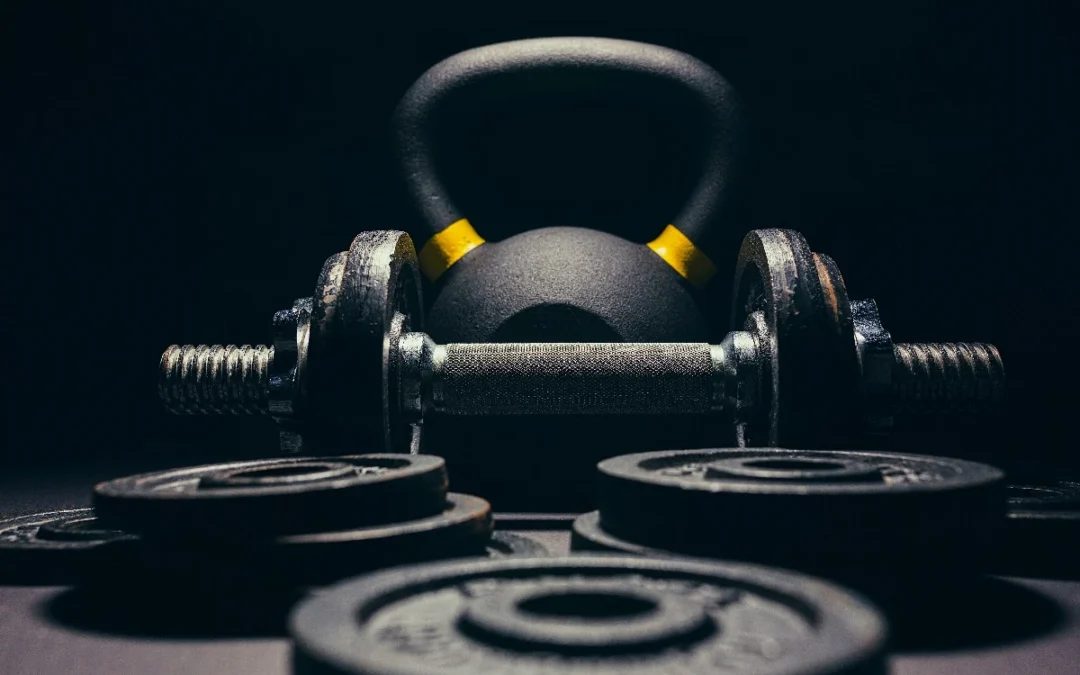Free weights are a natural progression from weight machines, and as long as your form is correct and you’re protecting your back and other joints, you can work out in almost any environment.
You can use equipment ranging from barbells to dumbbells, kettlebells to medicine balls, adding new plates as your strength increases, and incorporating maximum-impact compound exercises into your gym sessions.
The only difference between a machine and a set of free weights is that the latter is moveable – there’s nothing more technical about it! Most gyms will have racks of dumbbells and kettlebells, ideally stacked in order of size and weight, and you can pick any set that isn’t in use.
The argument about free weights vs. machines has been raging for years. Both can be beneficial and valuable ways to work on your fitness. However, free weights are a good option if you’re comfortable with machines and want to challenge yourself.
The Benefits of Building Free Weights Into Your Fitness Regime
It’s worth clarifying that free weights aren’t for everybody. While they’re a proven way to build more muscle over the long term, with an endless capacity to add more reps and plates or reduce your rest period, there are some scenarios where I’d suggest an alternative.
That’s often because of injuries or movement restrictions, where a seated machine might simply be more comfortable or a better option to protect your health and keep you free from injury.
Where possible, the big added value of free weight training is that, regardless of the movement, you’re activating and using your core. This happens because your core ab muscles have to engage to keep your body stable and upright or to maintain your position – which means you develop better control and balance as a happy side effect of the movement you’re performing.
Other advantages include:
-
- Improved functional fitness, where lifting something from the floor, holding a heavy item overhead, or moving a kettlebell around your body better mimics natural everyday movements, like lifting heavy shopping or helping a child reach a shelf.
- Free weights are 100% adaptable to your ability, confidence and strength. If you’re new to resistance training, you could begin with the lightest kettlebell in the gym or use a PVC pipe to learn an Olympic lifting technique before using the heavier barbell. All are valuable, and you can easily see and feel your progress each time you’re able to add another plate or perform one more rep.
There are also thousands of variations of every well-known exercise, and you don’t need to start with a 15kg or 20kg barbell loaded with heavy weights for those movements to be hugely effective.
The ability to keep your workouts fresh, try different variations, and use whatever equipment is available is a great aspect since many people have limited kit within their gym or don’t have space in a home gym to store a wide range of bars.
Why Form Is Important to Lifting Weights Without Risking Injury
Although it’s easy to advocate for the benefits of free weights, it’s also key that you learn the right form before attempting any freestanding weighted exercises. When we talk about good form, we’re simply talking about the way you move and control the weight.
Working with a qualified, experienced personal trainer not only prevents avoidable injuries but also ensures you’re targeting the right muscles whenever you perform a weighted movement.
It is always better to repeat a smaller number of repetitions with excellent form, or at a more manageable weight, than to attempt higher or heavier reps that are detrimental to your form. When we work through the best form for any particular movement or exercise, we’ll talk about:
-
- Warming up and activating your muscles
- Maintaining balance, posture and body positioning
- Ways to finish each movement safely
- Optimising your breathing
- Controlling weights rather than swinging or relying on momentum
- Safety equipment, such as optional chalk, gloves or straps where appropriate
- Your workout schedule, ensuring you factor in rest days
Many people find that having a spotter is ideal when they first try free weights – this means your trainer can keep an eye on your form, offer advice and tips throughout your workout, and help support the weight if you have reached the end of your set or need assistance.
Tips for Gym Goers New to Free Weights
Hundreds of clients tell me that attending a commercial gym for the first time, with racks of different weights and countless machines, feels intimidating.
While I always recommend having at least a few sessions with a personal trainer to ensure you know the basics of good form and aren’t starting with reps that are too heavy or intensive and likely to cause injury, there are also a few insider hints that may be handy:
-
- The colour codes on weights are purely for ease of use, and there is nothing wrong with checking the weight stamped or printed on the side. You’ll soon know whether you’re best with a yellow-banded 16kg kettlebell or need another bright green 10kg bumper plate.
- Putting your kit back in a free weights section is considered good etiquette, as is wiping down any weights that have become a little sweaty. You can use chalk if it’s available to stop your hands from sliding but should clear any dust away after your workout.
- Clips are there for safety – you slide them onto the end of the barbell when you’ve loaded your plates. Always use the clips, even if some experienced trainers are happy deadlifting or performing less active lifts without them.
If you’d like to learn more about free weights, resistance training, or creating a personalised workout programme to work on your strength, core stability, fitness, and form, please get in touch.
Free weights are a fantastic addition to any workout regime, and there are literally endless variations and movement patterns to try. But, as I’ve explained, getting the form absolutely spot on is crucial for beginners, getting you in great shape as your weights get heavier and your muscles stronger without the risk of injury.


Recent Comments